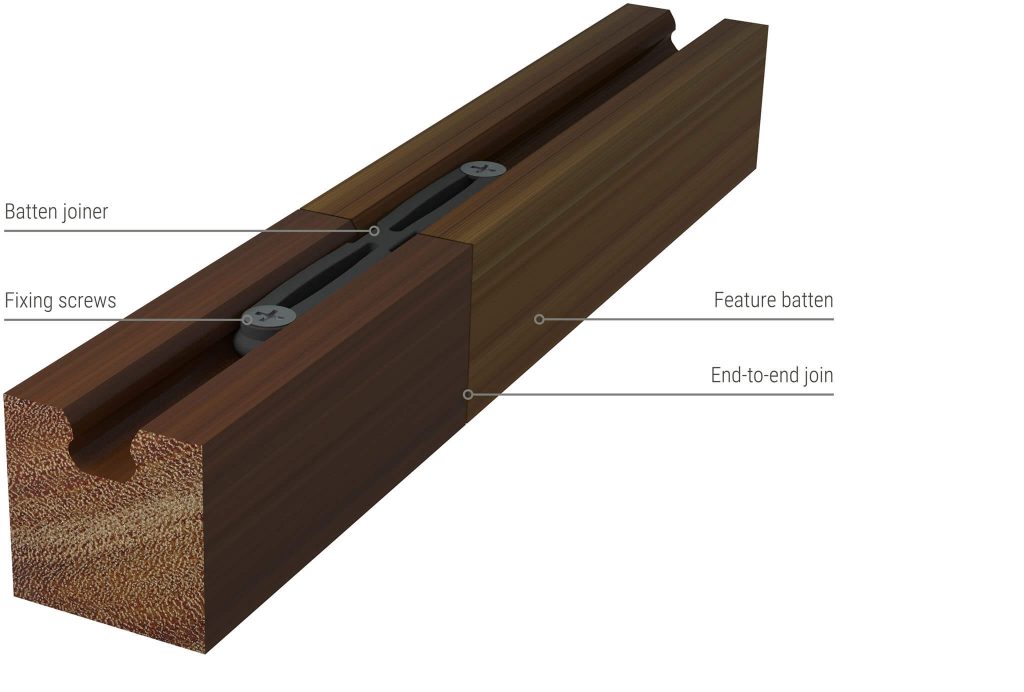-
Australia
Copyright © 2025 Powered by BCI Media Group Pty Ltd
Confirm Submission
Are you sure want to adding all Products to your Library?
Contact Detail

19 JANUARY 2021
We won’t hide from the fact that timber moves! It’s a natural product and it’s normal for the material to shrink and expand according to the conditions of its surrounding environment. You may be wondering how this happens and how can it be minimised? Read on to find out.
A high-quality installer will work extra hard to ensure that two pieces of timber join perfectly flush and level, but a few months after they’ve finished, the timber adjusts to the environment and wood movement may occur.
Timber movement is caused by the material contracting or expanding tangentially, radially or longitudinally. Depending on how the timber is installed, it may appear cupped, warped, twisted or crooked due to movement. Much of this movement is likely to occur towards the timber boards’ end grain (end of the timber) and is most noticeable where two boards meet as they may no longer sit flush.
There are a number of factors accounting for wood movement. Wood movement does not mean that the installer’s workmanship was poor, or that the wrong product was selected, or that the feature design was not up to scratch. Timber movement is an unavoidable factor due to environmental conditions, however, there are steps that we can be taken to reduce the amount of movement dramatically.
Understanding moisture content and wood movement is vital when explaining why timber moves. Timber is a hygroscopic material, which means it will continuously equalise to the ambient moisture conditions of its environment. When the timber and its environment have moisture contents that are in equilibrium, then the timbers moisture content in this state is known as the equilibrium moisture content (EMC). Timber loses or gains moisture to be in equilibrium with the atmospheric moisture in its immediate environment and if there is no change in equilibrium the timber should not move.
To become in equilibrium with the environment, timber will attract moisture by absorption/adsorption or dry out below its fibre saturation point to slowly acclimatise to the moisture content of its surroundings. This is relative to the ambient humidity and temperature conditions.
The EMC is critical as moisture content is the most important factor in timber movement.
Timber movement is most likely to occur within the initial 2-3 months after installation while it acclimatises to its specific new environment. So, in theory, once the timber moisture has hit equilibrium, and the environment is relatively stable, no more movement should occur.
Unfortunately, it’s almost impossible to predict site conditions to the point where we will know the exact EMC. We receive our timber unseasoned (green) which has a high moisture content that needs to be dried out.
To achieve this, we kiln dry all timber in our factory to become seasoned timber to meet Australian standards (moisture content of 9-13%). Timber in this condition will be in equilibrium with most internal and external environments in many parts of Australia. In most instances, this is as close as reasonably possible to a normal environments EMC. However, on every project, we can expect that timber will need to balance to equilibrium to some degree.
Kiln drying timber is a long process and takes between 4-6 weeks, making it hard to predict supply requirements to meet specific EMC conditions, as these vary with seasonal changes, geographical locations and even internal factors such as air-conditioning.
If environmental conditions are relative humidity of 60% and the temperature is stable at 20°, EMC is achieved at 10% moisture content. Often, we find mechanically ventilated office environments operate in the range of 40-60% humidity and 22° (+/- 2), so we can expect an EMC of between 9-13% which is consistent with the Australian Standard.
Natural timber is going to have some movement, no matter what we do. However, there are steps we can take to minimise how much movement occurs in our timber products.
Coat all the timber and end grains: Coating the whole piece of timber, with particular attention to end grains, will help protect the piece of timber from moisture. Most movement occurs at the end of the boards, so it makes a big difference if you steal these with a coating to reduce moisture infiltration. Exposed end grains absorb moisture up to 250 times more rapidly than any other surface on the timber.
Install batten joiners: These align the butt ends of Click-On Battens by sliding into the dovetail groove in the back of each batten and clicking in place.

End-match the timber: End-matching is a small tongue and groove profile on the ends of our timber Click-On Battens and Tongue and Groove Cladding. When engaged, these profiles help to maintain alignment at the butt joins when used in conjunction with a batten joiner.

Consider timber species: Some timber species are more prone to movement than others. For example, Spotted Gum has lower tangential movement (shrinkage across the board width) than Blackbutt, so it will be more stable and is likely to move less. Visit our editorial on timber species to find out which type fits your needs.
Fix timber to the substrate: Our traditional mounting track centres at 450mm for an external application and 600mm for an interior application. If you are particularly concerned about the environmental conditions on a certain application, then we can make suggestions about adding additional fixings to increase stability. Please talk to your Sculptform representative about this if you require further information.
Consider humidity and temperature during the design process: Taking these into consideration can lead to an alteration of your design so that the timber is installed in a way to suit local conditions. Timber responds best to ambient conditions that are relatively stable.
Use smaller rather than larger cross-sections if possible: The smaller the piece of timber, the less noticeable any bending/warping will be.



